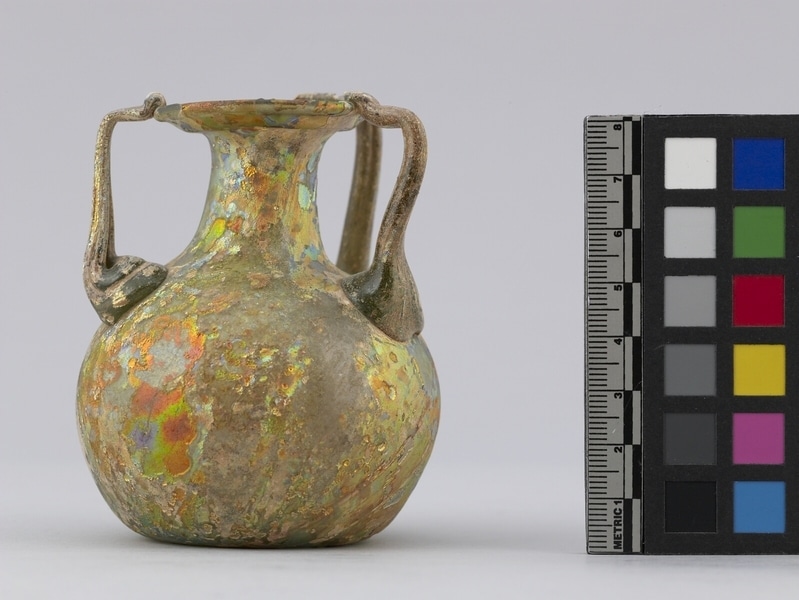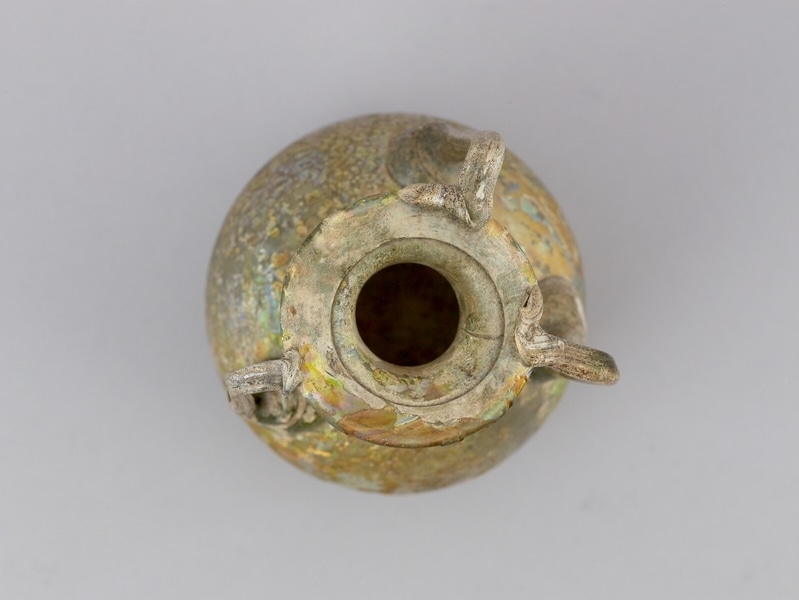Jug Item Number: M3.42 from the MOA: University of British Columbia



Description
Small glass jug with three handles. The body is spherical with a slightly concave bottom. The neck is short and cylinder shaped, sloping out to the shoulders. The rim is wide and splayed with a convex ring around underside formed by two concentric indentations. The three drawn handles are attached to the rim and the shoulder. There are beads of glass at the start and finish of each handle.
History Of Use
Used to store unguents, oil or perfume.
Narrative
The van Haersolte Collection
Specific Techniques
The iridescence of ancient glass is a symptom of changes in the metal content. It is caused by exposure to damp earth or humid air over a long period of time. Carbon dioxide is dissolved in the moisture of the air or soil, forming carbonic acid. This in turn combines with the alkaline constituent of glass, bringing about the decomposition of its surface. Glass which has been decolourized with manganese dioxide, such as this piece, displays more iridescence, coloured glass less. Genuine iridescence lessens the weight of glass, therefore the greater the iridescence the lighter the glass.
Item History
- Made in Syria ? between 200 and 300
- Collected during 1890
- Owned by Baron van Haersolte van den Doorn and Baron van Haersolte van den Doorn
- Owned by Kathleen van Haersolte van den Doorn before April 26, 1956
- Received from Leon & Thea Koerner Foundation (Funding source), U.B.C. President's Fund (Funding source) and Kathleen van Haersolte van den Doorn (Seller) on April 26, 1956
What
Who
- Culture
- Near East
- Previous Owner
- Baron van Haersolte van den Doorn, Baron van Haersolte van den Doorn and Kathleen van Haersolte van den Doorn
- Received from
- Leon & Thea Koerner Foundation (Funding source), U.B.C. President's Fund (Funding source) and Kathleen van Haersolte van den Doorn (Seller)
Where
- Holding Institution
- MOA: University of British Columbia
- Made in
- Syria ?
When
- Creation Date
- between 200 and 300
- Collection Date
- during 1890
- Ownership Date
- before April 26, 1956
- Acquisition Date
- on April 26, 1956
Other
- Condition
- fair
- Current Location
- Case 96
- Accession Number
- 2308/0213